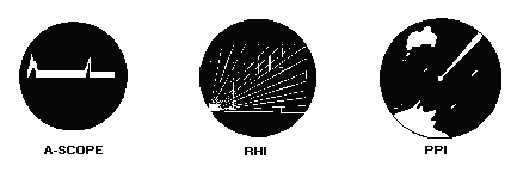3-22
accumulation inside them. Such accumulation would introduce losses. Because the low air pressures
encountered at high elevations are very conducive to arcing, pressurization of equipment is widely used
(the pressure is maintained by a small air pump). In some airborne radar equipments, practically all of the
equipment is sealed in an airtight housing, along with the antenna and transmission line. The antenna
radome forms a portion of the housing.
Airborne radar antennas are constructed to withstand large amounts of vibration and shock; the radar
antennas are rigidly attached to the airframe. The weight of the radar antenna, including the rotating
mechanism required for scanning, is kept to a minimum. In addition, the shape of the radome is
constructed so as not to impair the operation of the aircraft.
The airborne radar antenna must have an unobstructed view for most useful operation. Frequently,
the antenna must be able to scan the ground directly under the aircraft and out toward the horizon. To
meet this requirement, the antenna must be mounted below the fuselage. If scanning toward the rear is not
required, the antenna is mounted behind and below the nose of the aircraft. If only forward scanning is
needed, the antenna is mounted in the nose. When an external site is required, a location at the wing tip is
common. A fire-control radar antenna is frequently located near the turret guns or in a special nacelle,
where it can scan toward the rear or sides of the aircraft.
Q14. How many major lobes are produced by a paraboloid reflector?
Q15. What type of radiator normally drives a corner reflector?
Q16. The broadside array consists of a flat reflector and what other elements?
Q17. Horn radiators serve what purpose other than being directional radiators?
SUMMARY
The following is a brief summary of the important points of this chapter.
A radar INDICATOR presents the information (video) from the radar receiver in a usable manner.
The display usually consists of one or more of the coordinates of range, bearing, and altitude.
The CATHODE-RAY TUBE (crt) is the best available device for displaying the two-dimensional
relationship produced by radar coordinates. The most commonly used crt displays are the A-SCOPE, the
RHI, and the PPI. The A-scope presents range information only. The rhi displays range and height
information. The ppi is the most widely used radar display indicator and presents range and bearing.

